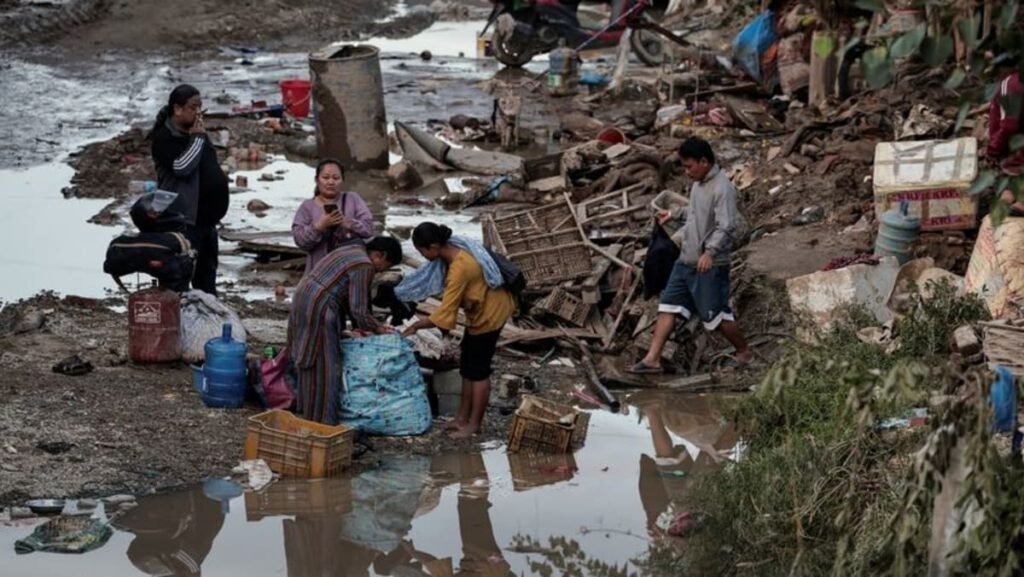Nepal’s army has been actively involved in rescuing over 4,000 people who have been stranded due to the devastating floods. Helicopters, motorboats, and rafts have been utilized to bring these individuals to safety. Nilkantha Pandey of CARE Nepal emphasized that many of those affected by the floods are in need of safe drinking water and temporary housing, particularly in informal settlements. The urgency of the situation is clear, and immediate response is necessary to address the needs of the affected population.
The impact of the floods has been felt beyond just those directly affected, with merchants in Kathmandu reporting significant challenges in the supply of fresh fruit and vegetables due to damage to intercity roads. This has resulted in produce being stuck and unable to reach the capital, leading to potential shortages and increased prices. The disruption of vital supply chains highlights the far-reaching consequences of natural disasters like floods and the importance of swift action to mitigate these effects.
Nepal’s weather bureau has noted that the recent precipitation levels have been unprecedented, with record-breaking rain measured in the 24 hours leading up to Saturday morning. The monitoring station at Kathmandu airport recorded approximately 240 millimetres of rain during this period, the highest amount seen since 2002. These extreme weather events further underline the severity of the situation and the urgent need for assistance and support for those impacted by the floods.
The situation in Nepal underscores the vulnerability of communities to natural disasters and the importance of preparedness and response efforts. Informal settlements, in particular, are often at greater risk during such events due to their precarious living conditions and lack of infrastructure. Immediate action is needed to provide essential resources such as safe drinking water and temporary housing to those affected by the floods, as well as to ensure the restoration of critical supply chains to prevent further disruptions.
The ongoing rescue efforts by Nepal’s army are crucial in saving lives and bringing those in danger to safety. The use of helicopters, motorboats, and rafts demonstrates the commitment to helping those in need and highlights the resilience and dedication of emergency response teams in the face of adversity. The coordinated response from various organizations and agencies, including humanitarian groups like CARE Nepal, is essential in ensuring that relief efforts are effective and reach those most in need during this challenging time.
As Nepal grapples with the aftermath of the devastating floods, it is essential for local authorities, aid organizations, and the international community to work together to provide support to those affected. Immediate relief efforts, long-term recovery strategies, and preventative measures to reduce the impact of future disasters are all necessary components of a comprehensive response to the crisis. The resilience and strength of the Nepalese people are evident as they come together to overcome this challenging situation and rebuild their communities in the face of adversity.












